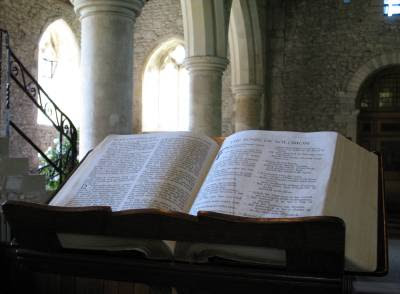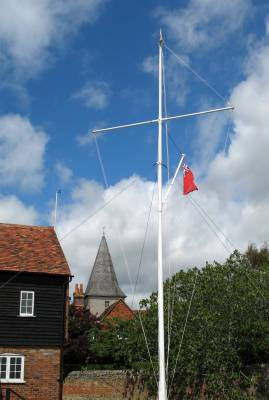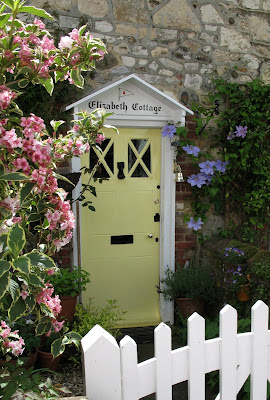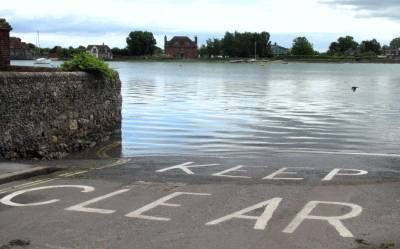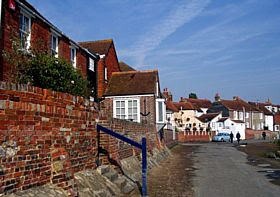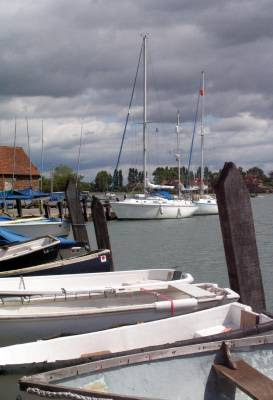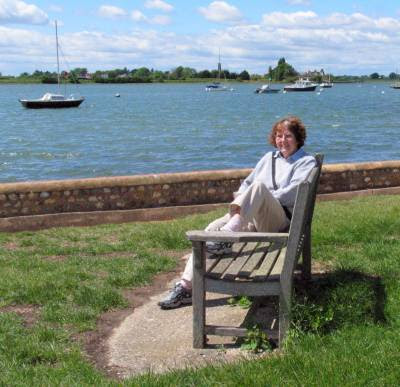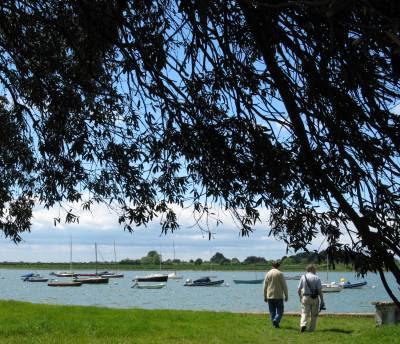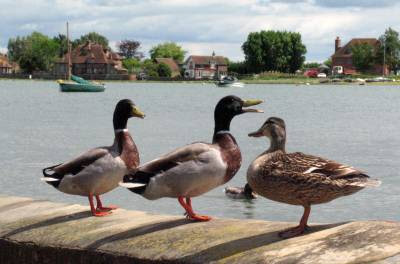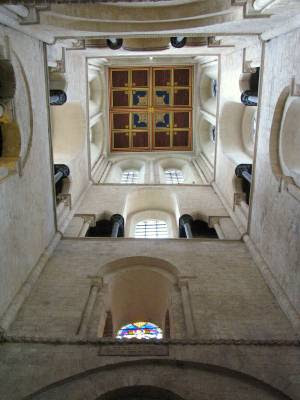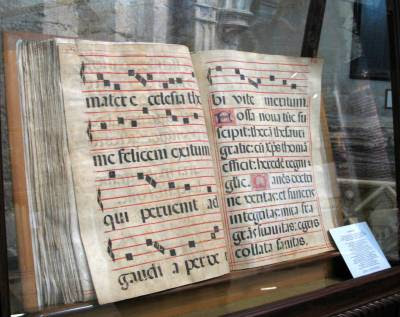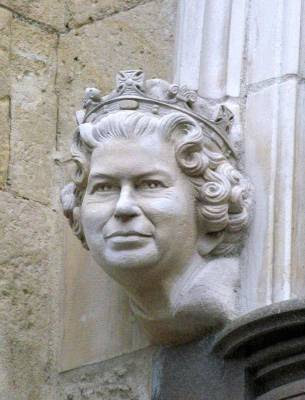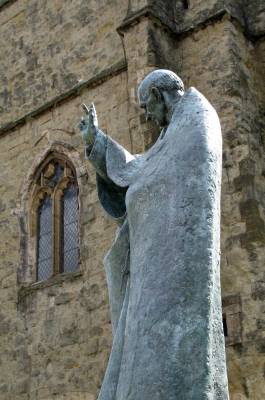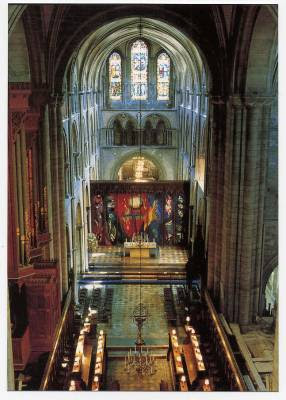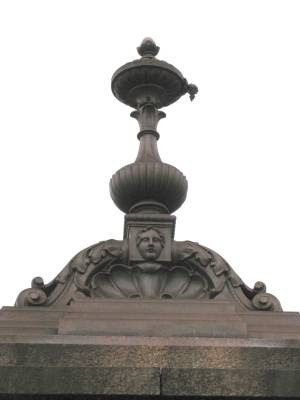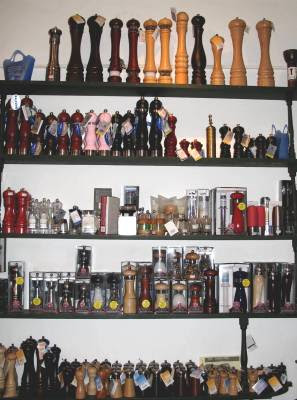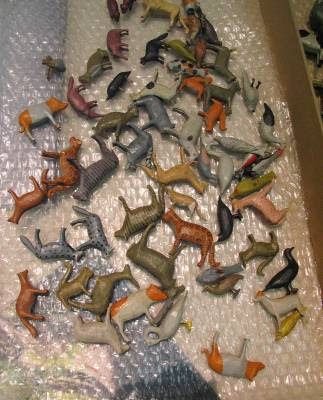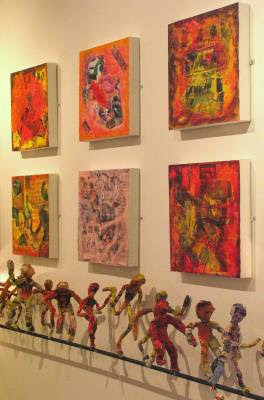Wednesday, May 30, 2007
17th May Part 4 Bosham church and cottages.
The church at Bosham is very old. There has been a church building on this site since 730 AD. This building dates from the 10th century.
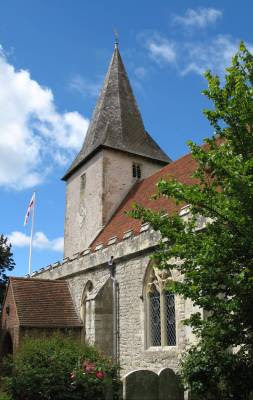
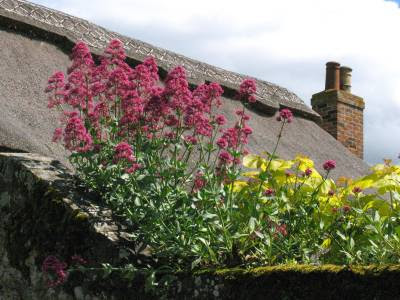

The Saxon arch is depicted in the 11th century Bayeux Tapestry.
The daughter of King Canute is buried under the main aisle.
The story of King Canute trying to halt the advancing tide is supposed to have happened at Bosham - perhaps he was afraid of losing his chariot under the water, as we almost did once.
A reminder that a church is much more than a museum or a history lesson.
The church and the War memorial.
The cottages along the street are very pretty, using tradiational stone and thatch.

Friday, May 25, 2007
17th May. Chichester. Part 3. Bosham Harbour.
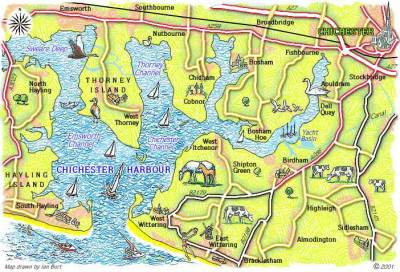
Bosham is the best known of the Chichester Harbour Villages.
It is pronounced Boz - um.
Later in the day we went to Itchenor. There is a ferry from Bosham Hoe to Itchenor, but only at weekends. It is a long drive round.
At high tide the harbour road is under water.
Below is a picture from a web site showing the road at low tide. It winds round the edge of the harbour.
Many years ago we parked our car on that road and went for a walk. When we came back the tide was in and the car had disappeared. Fortunately a kindly person had been able to move it for us.
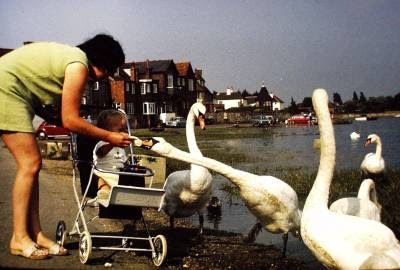

And here I am with baby Jamie enjoying a walk along the harbour road in 1970.
The swans in Bosham were almost tame and I didn't feel alarmed having their beaks so close to Jamie.


Bosham is a popular centre for boating.
When the sun came out the harbour atmosphere was peaceful and relaxing.
Thursday, May 24, 2007
17th May. Chichester. Part 2. The town.
Chichester is a small city, with a population of less than 25,000. It is the County Town of West Sussex and is a centre for the surrounding rural and coastal towns and villages.

Cottage near the cathedral.
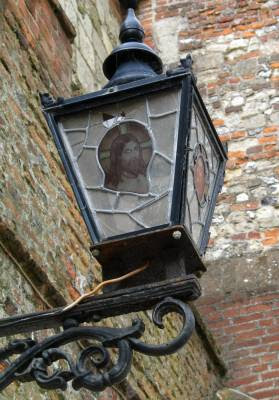
Lamp close to the cloisters.

The Market Cross - at the centre of a crossroads with 4 busy shopping streets intersecting at this point.

South Street, looking towards the market cross.
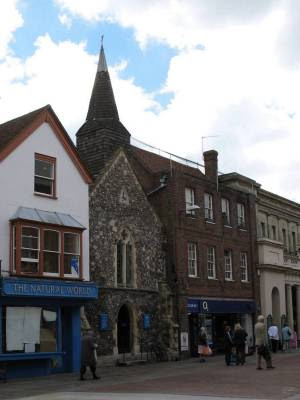
An old church has been swallowed up by the surrounding shops. It is now used as a Christian book shop.

Ashley joins Bill and me after spending time and money in the Christian book shop.

At this time of year the herb, valerian, grows just about everywhere including on the tops of walls.

Cottage near the cathedral.

Lamp close to the cloisters.

The Market Cross - at the centre of a crossroads with 4 busy shopping streets intersecting at this point.

South Street, looking towards the market cross.

An old church has been swallowed up by the surrounding shops. It is now used as a Christian book shop.

Ashley joins Bill and me after spending time and money in the Christian book shop.

At this time of year the herb, valerian, grows just about everywhere including on the tops of walls.
Wednesday, May 23, 2007
17th May Chichester. Part 1. Cathedral
For nearly 1,000 years the cathedral at Chichester has dominated the landscape and drawn worshippers and visitors to its door.
A cathedral is not a museum; it is a living and ever changing centre of Christian spirituality. Even for those who profess no faith, a cathedral or church creates a time of still and calm. There is beauty all around and an atmosphere full of the history of all who have walked and worshipped there.
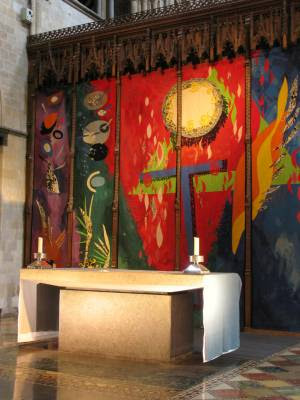

Things within a cathedral reflect the changing tastes and times of the people. The altar is now simple, with an amazing modern tapestry by John Piper behind.
Candles can have a spiritual and soothing effect on the soul. I like to light a candle in a church and think of those in need.
Outside the cathedral are many interesting things to see. On either side of the main door are life size heads of the Queen and the Duke of Edinburgh. I like this image of the Queen - it has humour and joy and gentleness.
St Richard of Chichester was born in 1197. He was great teacher and theologian and Archbishop of the cathedral.
His simple prayer is well known.
Thanks be to thee, our Lord Jesus Christ,for all the benefits which you have given us, for all the pains and insults which you have borne for us. Most merciful Redeemer, Friend and Brother, may we know you more clearly, love you more dearly, and follow you more nearly, day by day. Amen.
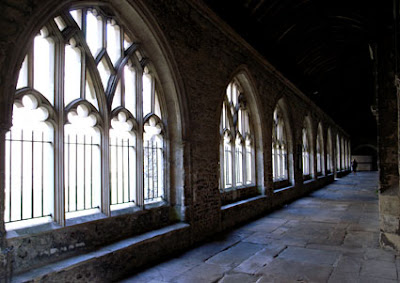

The cathedral buildings were badly damaged during the reformation. Fortunately a small part of the cloisters remain.
Now we will take one last look inside the cathedral, which on the day we were there was about to celebrate a service of Holy Communion for Ascension Day.
The first and last pictures about the cathedral are post cards.
Monday, May 21, 2007
14th May. Tunbridge Wells Part 4. Details.
There is always so much to see and appreciate.
Here are some details seen in Tunbridge Wells a week ago.
I love old bird cages. Perhaps these on the paving outside an antiques and curios shop were not actually old - but they were still attractive.
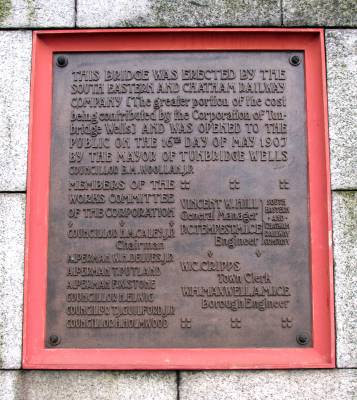

This was the plaque on the bridge over the railway.
We were pleased to see that the bridge was celebrating its 100th birthday on the week we were walking over it.
Another detail on the bridge over the railway, probably ignored by most who cross the bridge. Sometimes we have to lift our eyes to notice things.
It wouldn't have been surprising to have avoided looking up - such a grey sky above us.
The kitchen/hardware shop in The Pantiles was a delight. They sold so many gadgets and tools for the kitchen.
Above there is the vast range of pepper mills.
And below we see collanders of many kinds making a lovely pattern.
As a footnote I must tell you that I own 2 collanders. One is fairly new and came from Ikea. It is white and rather like the ones on the right in the picture.
My other collander is very precious to me - I bought it in Woolworths in Richmond before were married. I saw that my college friends, preparing to be married, were collecting for their bottom drawer and I thought I should do the same.
All I could afford was an aluminium collander - still serving me well after all these years (43 years almost).
Saturday, May 19, 2007
14th May Tunbridge Wells Part 3. Museum and art.
We called in to Tunbridge Wells Museum to escape the rain.
We enjoyed our visit - and, as ever, loved the old toys most of all.
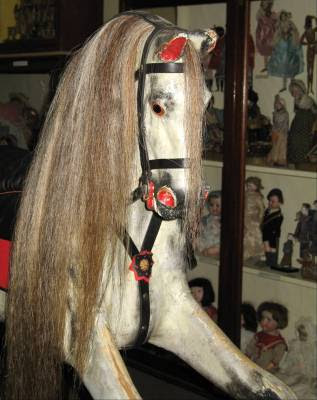
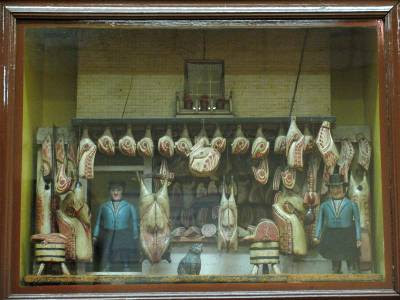
We enjoyed our visit - and, as ever, loved the old toys most of all.


This is a post card of the Noah's Ark.
Bill's eyes were drawn to items being studied by museum people at the desk - more old animals.
I think he would have loved to be sorting them out.
Tunbridge Ware is beautiful. Here is a description from Wikipedia.
Tunbridge ware is a form of decoratively inlaid woodwork, typically in the form of boxes, that is characteristic of Tonbridge and the spa town of Tunbridge Wells in Kent in the 18th and 19th centuries. The decoration typically consists of a mosaic of many very small pieces of different colored woods that form a pictorial vignette. Shaped rods and slivers of wood were first carefully glued together, then cut into many thin slices of identical pictorial veneer with a fine saw. Elaborately striped and feathered bandings for framing were pre-formed in a similar fashion.
There is a collection of Tunbridge ware in the museum in Tunbridge Wells.
There is a collection of Tunbridge ware in the museum in Tunbridge Wells.
We were very impressed with the collection.
The box in the picture has a picture of The Pantiles on it.
The art gallery was being used to display the work of pre school children and it looked lovely.


